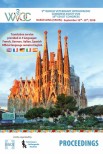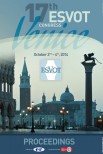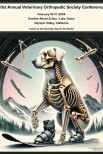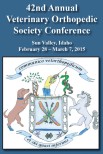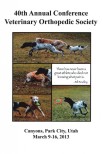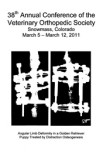OBJECTIVE: To measure the density of cellular phenotypes in canine caudal cruciate ligament (CaCL), cranial cruciate ligament (CrCL), medial collateral ligament (MCL), and long digital extensor tendon (LDET).
STUDY DESIGN: Ex-vivo study.
METHODS: Ten CaCL, CrCL, MCL, and LDET obtained from 1 stifle of 10 dogs with no gross pathology were analyzed histologically. The density of cells with 3 nuclear phenotypes (fusiform, ovoid, and spheroid) was determined within the core region of each specimen.
RESULTS: Cells with fusiform nuclei were most dense in the MCL (median [range], 319 [118-538] cells/mm2 ) and LDET (331 [61-463]), whereas cells with ovoid nuclei were most dense in the CaCL (276 [123-368]) and CrCL (212 [165-420]). The spheroid nuclear phenotype had the lowest density in all structures (31 [5-61] in CaCL, 54 [5-90] in CrCL, 2 [0-14] in MCL, and 5 [0-80] in LDET); however, the CrCL contained a denser population of spheroid cells compared with MCL and LDET (P < .05). Total cell densities did not differ among the 4 structures (P > .05).
CONCLUSION: Phenotype density varied within the ligaments and tendon tested here. The cell population of CaCL and CrCL differed from that of dense collagenous tissues such as MCL and LDET.
CLINICAL SIGNIFICANCE: The relatively higher density of spheroid phenotype in CrCL may reflect a distinctive native cellular population or a cellular transformation secondary to unique mechanical environment or hypoxia. This intrinsic cellular population may explain altered tissue properties prone to pathological rupture or poor healing potential of the canine CrCL.


